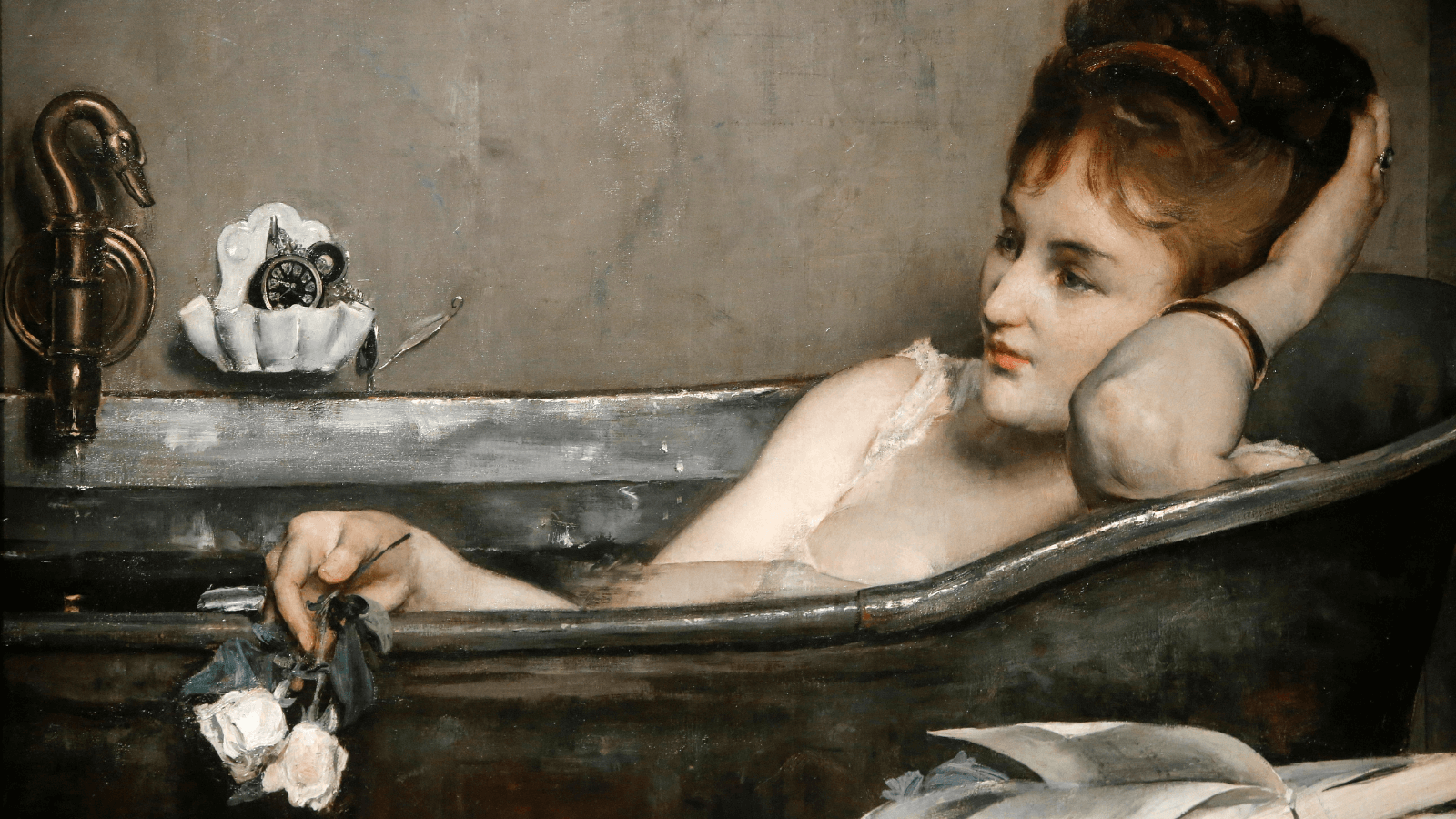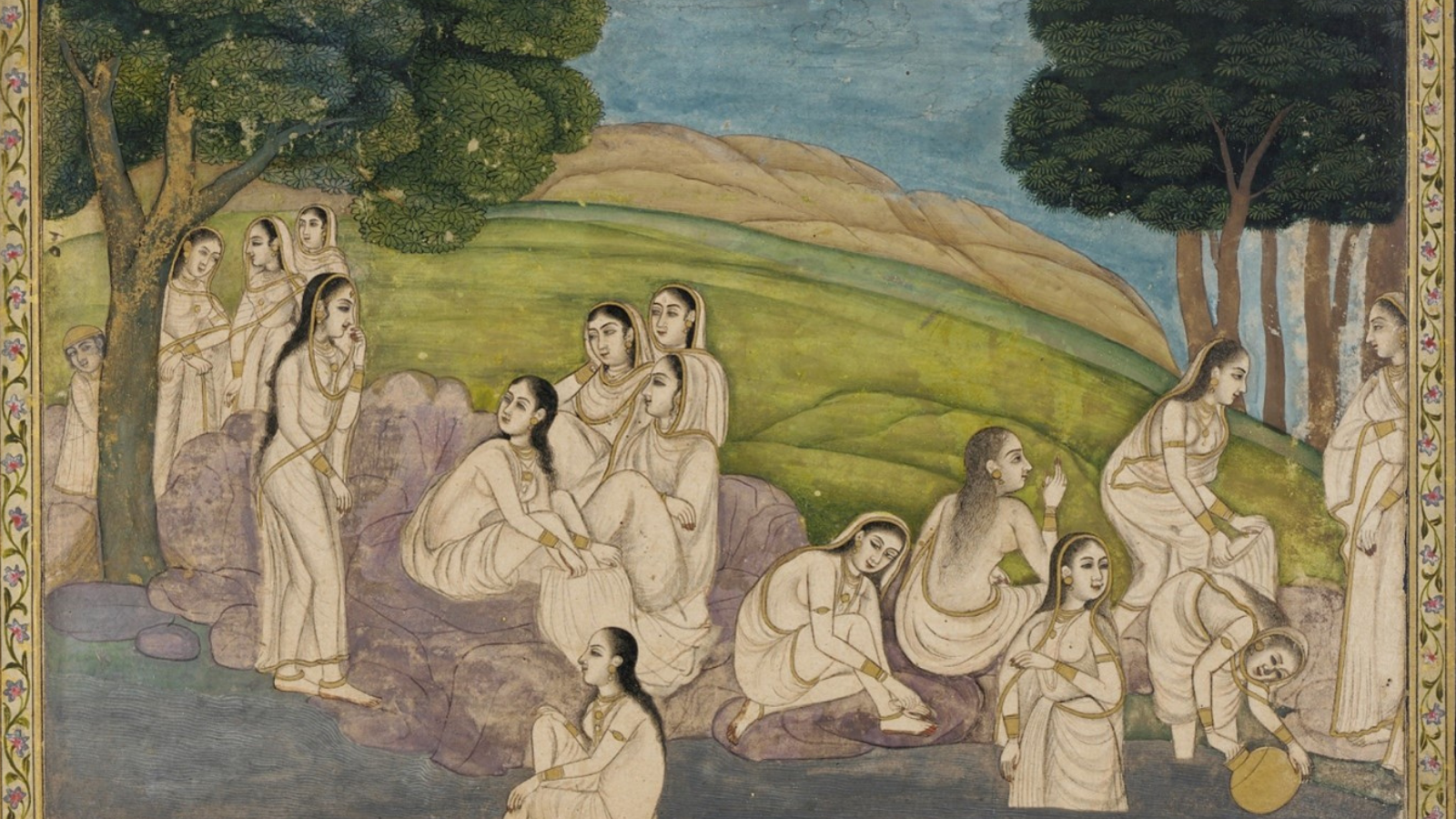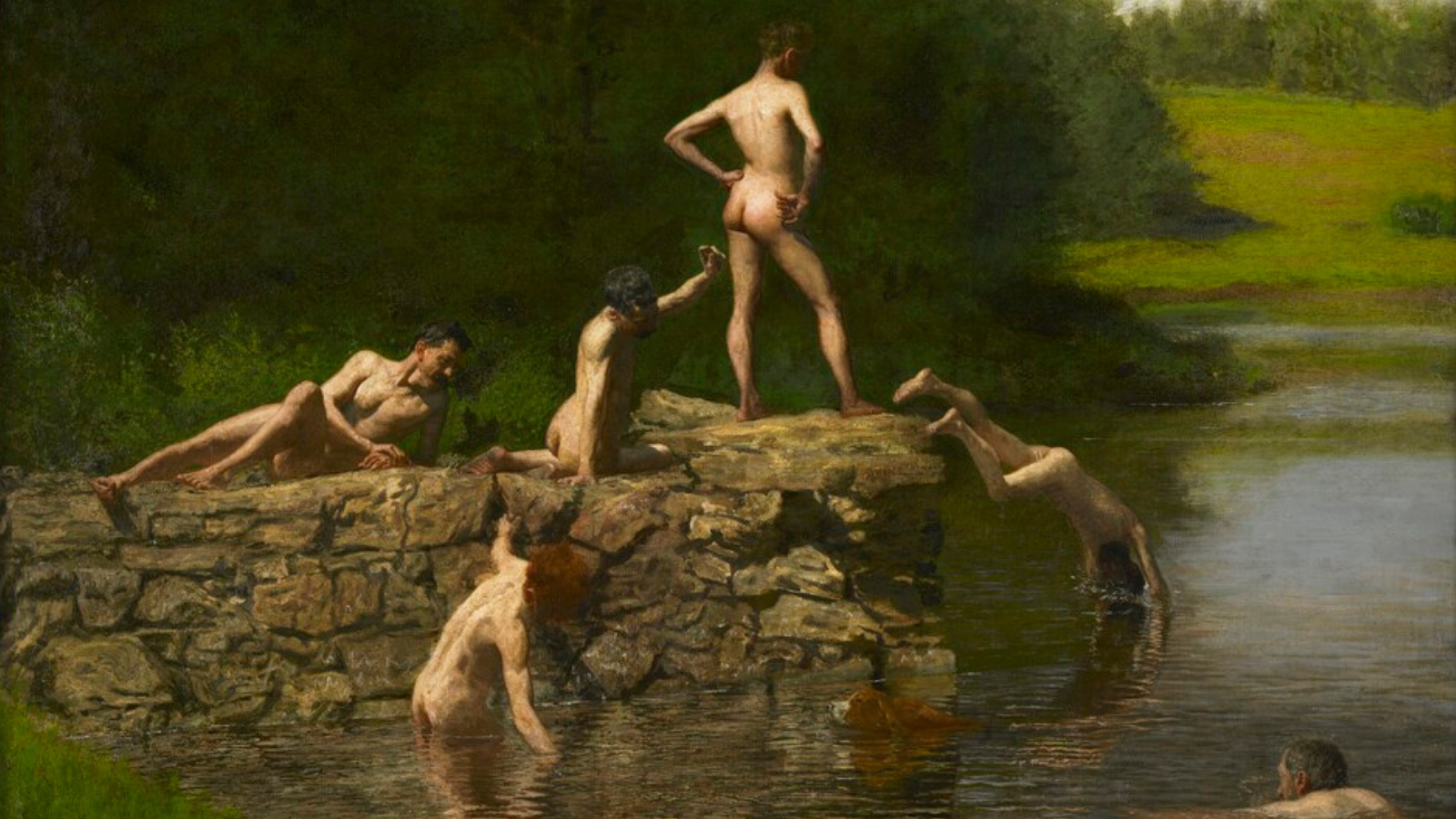Категории
Медия / Сообщество
THE BATH’S ALLURE IN ART
By Becca Hensley

In her 2017 series Soak, British artist Emily Ponsonby painted a coterie of women in the bath. The paintings were meant to reflect on the bliss of nudity and how bathing itself continues to be an opportunity for reset or rebirth each time we step into the tub.
Water affects us on every level: mind, body, and spirit. Add in the ceremony of bathing, and water becomes much like a fluid liminal space, a metaphor for ridding ourselves of what we don’t need to move forward.
Ponsonby’s contemporary work follows a long line devoted to this motif. From ancient times, artists have depicted humans attending to their bathing rituals. Ever evolving in purpose, the artwork has been allegorical, instructional, symbolic, religious, a record of daily life, a way to present the nude—and, of course, provocative, in turns.
The pieces, whether sculpture, ceramics, paintings, or mosaics are found in museums, on monument walls, in ancient bathhouses, and in illuminated manuscripts, woven into fabric and beyond. An ancient Greek vase reaches through time to depict male bathers standing beneath waterspouts at a public bath, evoking showers at a modern spa. Early works were often sculptural, showing nude figures holding a towel or standing near a tub—such as the numerous representations of Aphrodite.
Plein air paintings often showed subjects being baptized or experiencing something otherworldly—as in Lucas Cranach’s The Fountain of Youth, painted in a primitive Northern Renaissance style. Eighteenth-century painter Giuseppe Bartolomeo Chiari painted Bathsheba at Her Bath luxuriously pampered by her attendants in a more idealized style, veering towards Rococo.

But the advent of running water in the 19th-century changed things. At once, artists brought the subject matter indoors. Suddenly, a seductive and luscious era made bath time the setting, and most every artist dived in—including Picasso. Degas quit painting dancers to portray legions of bathing females. In Alfred Stevens’ Woman Bathing, a woman daydreams in an ornate bath, an open book by her side and roses in hand.
For many artists, bath time in portraiture became a chance to explore women’s bodies and their curves, and to also show emotion. Female painters transcended the genre to show women at work and repose at home, as Mary Cassatt did with Woman Bathing. The Harlem Renaissance brought works like Romare Bearden’s intimate watercolor After the Bath and Horace Pippin’s spirited Saturday Night Bath.
Men’s bathing rituals, whether communal or solitary, also attracted the attention of artists. Thomas Eakins’ Swimming and Gustave Caillebotte’s Man at His Bath study the male form in full color, their subjects unself-conscious in their ablutions.
Glorious renditions of bathing outdoors often depict it not only as a cleansing ritual but also as a social gathering around a body of water. An 18th-century painting by an unknown artist depicts a group of women in India bathing, relaxing, and socializing by a river.

Studies like Emily Ponsonby’s and Alfred Stevens’ paintings bring us indoors, granting us intimate glimpses of bathers’ lives as they relax, think and dream while going about their rituals in the privacy of their baths.
1. Orsay Museum, Alfred Stevens. The Bath also known as Woman Bathing. Oil on canvas, c. 1867. France.
2. A Group of Women Bathing, 18th century, unknown artist, Mughal Dynasty, National Museum of Asian Art, Gift of Charles Lang Freer, CCO
3. Thomas Eakins (1844–1916), Swimming, 1885, oil on canvas, Amon Carter Museum of American Art, Fort Worth, Texas,
Purchased by the Friends of Art, Fort Worth Art Association, 1925; acquired by the Amon Carter Museum of American Art, 1990,
from the Modern Art Museum of Fort Worth through grants and donations from the Amon G. Carter Foundation,
the Sid W. Richardson Foundation, the Anne Burnett and Charles Tandy Foundation, Capital Cities/ABC Foundation,
Fort Worth Star-Telegram, The R. D. and Joan Dale Hubbard Foundation and the people of Fort Worth, 1990.19.1